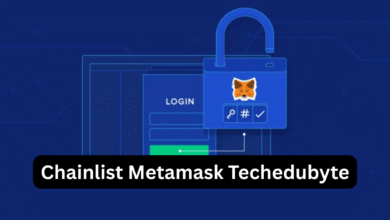Why PEP Checks Are Essential for Financial Compliance

In today’s globalized financial environment, regulatory compliance is more critical than ever. With rising concerns about money laundering, terrorism financing, and corruption, financial institutions and other regulated entities are under pressure to scrutinize their clients carefully. One critical tool in this effort is the PEP check—a vital component of any comprehensive compliance program. In this article, we will explore why PEP checks are essential for financial compliance, how PEP screening works, and what to include in a proper PEP checklist.
What is a Politically Exposed Person (PEP)?
A politically exposed person (PEP) is an individual who holds or has held a prominent public position. This can include government officials, high-ranking military officers, heads of state-owned enterprises, judges, political party leaders, and more. Due to their influence and access to public resources, PEPs pose a higher risk for involvement in bribery, corruption, and other illicit financial activities.
The definition of a PEP can extend beyond the individual themselves. Close associates, family members, and business partners may also fall under scrutiny, as they can be used as conduits for illegal transactions or influence peddling.
Why PEP Checks Are Necessary
The primary reason PEP checks are essential lies in the principle of risk-based compliance. Financial institutions must understand who their clients are and assess the level of risk they bring. Failure to identify a politically exposed person can lead to massive regulatory fines, reputational damage, and even criminal penalties.
Here are some compelling reasons why PEP screening is a must for compliance:
1. Mitigating Corruption Risks
PEPs often have control over public funds and can influence decisions regarding major contracts or projects. This power makes them targets for corruption. PEP checks help financial institutions detect red flags before a high-risk client is onboarded, reducing the chance of becoming inadvertently involved in corruption or embezzlement schemes.
2. Meeting Global Regulatory Requirements
Global standards set by organizations like the Financial Action Task Force (FATF) require financial institutions to identify and monitor PEPs. Many jurisdictions also mandate enhanced due diligence for such individuals. Conducting regular PEP screening ensures compliance with these laws and minimizes regulatory risk.
3. Protecting Organizational Reputation
Associating with individuals involved in financial crimes can severely damage a company’s reputation. Conducting thorough PEP checks prevents the onboarding of risky clients and shows regulators, partners, and customers that your organization takes compliance seriously.
4. Preventing Financial Crimes
PEPs are often involved in complex schemes that exploit international financial systems. Without proper controls, companies can become unwitting participants in money laundering or tax evasion. A well-implemented PEP checklist can help prevent such scenarios by establishing consistent processes for identifying and assessing PEP risk.
The PEP Checklist: What to Include
To ensure thorough and effective PEP screening, financial institutions must develop a comprehensive PEP checklist. Below are key components that should be part of every compliance team’s toolkit:
✔️ Identification and Classification
Start by determining whether the client or their associates qualify as a politically exposed person. Use reliable data sources, such as government records, international watchlists, and specialized PEP databases.
✔️ Risk Assessment
Evaluate the level of risk associated with the PEP. Consider factors like the individual’s position, geographical location, type of business, and source of funds. Higher-risk PEPs should be subject to enhanced due diligence.
✔️ Enhanced Due Diligence (EDD)
For high-risk individuals, additional steps are necessary. This includes verifying the source of wealth and source of funds, ongoing monitoring, and obtaining senior management approval before proceeding with the business relationship.
✔️ Continuous Monitoring
PEP status can change at any time. A client who was not initially a PEP may become one later. That’s why regular PEP screening is essential. Use automated systems that flag changes in a client’s risk profile to stay ahead of potential issues.
✔️ Documentation and Reporting
Keep detailed records of all PEP checks, including risk assessments and the rationale for onboarding decisions. If suspicious activity is detected, report it promptly to the relevant authorities.
Manual vs. Automated PEP Checks
While manual PEP checks may seem cost-effective at first, they are often time-consuming, prone to error, and difficult to scale. As regulatory expectations grow, many organizations are turning to automated PEP screening tools that integrate with Know Your Customer (KYC) and Anti-Money Laundering (AML) platforms.
Automated systems offer several advantages:
- Access to real-time global PEP databases
- Instant alerts when a client is listed as a PEP
- Built-in audit trails for compliance reporting
- Reduced human error and faster onboarding times
By using automated tools, organizations can stay ahead of compliance demands while minimizing the administrative burden on their teams.
Common Challenges in PEP Screening
Despite their importance, PEP checks can be complex and challenging to implement effectively. Here are a few hurdles organizations may face:
1. Definitional Ambiguity
Different jurisdictions define PEPs differently. While some countries include domestic officials, others focus only on foreign PEPs. This inconsistency can create confusion and risk.
2. Data Accuracy and Coverage
Reliable and up-to-date data is the foundation of successful PEP screening. Incomplete or outdated databases can lead to missed risks or false positives.
3. False Positives
Overly broad PEP checks can flag too many individuals, overwhelming compliance teams and delaying client onboarding. A risk-based approach helps filter out noise and focus on real threats.
The Cost of Non-Compliance
Regulators around the world have imposed hefty fines on organizations that failed to conduct proper PEP checks. In some cases, these penalties have reached hundreds of millions of dollars. More importantly, non-compliance damages trust, which is critical for any financial institution.
By implementing robust PEP screening processes and adhering to a well-structured PEP checklist, organizations can protect themselves from legal trouble and reputational harm.
Conclusion: A Non-Negotiable Part of Compliance
In an increasingly regulated and interconnected financial landscape, PEP checks are not just a formality—they’re a legal and ethical necessity. Identifying a politically exposed person and assessing their risk profile through consistent PEP screening helps institutions prevent financial crimes, protect their reputations, and ensure compliance with international standards.
Whether you’re a financial institution, fintech company, or corporate entity engaged in high-value transactions, implementing a strong PEP checklist is one of the smartest steps you can take to stay compliant and build long-term trust.



